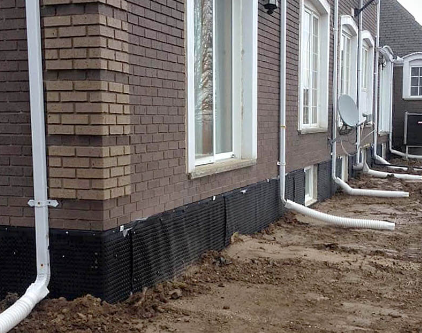
Why Is It Necessary To Waterproof Your Basement In Oshawa
Owning a home is a major investment, and protecting that investment is crucial. One of the most important steps in protecting your home is ensuring that your basement is properly waterproofed. This is especially true for homeowners in Oshawa, where heavy rainfall, snowmelt, and flooding can pose a significant risk to basements and the rest of the home.
In this article, we will discuss why it is necessary to waterproof your basement in Oshawa, what the consequences of not waterproofing can be, and the different types of oshawa basement waterproofing methods available.
Why is Basement Waterproofing Important in Oshawa?
Basement waterproofing is important in any location, but it is especially important in Oshawa due to the region’s climate and geography. Oshawa is located in the Durham Region, which is known for its heavy rainfall and its proximity to Lake Ontario. This means that Oshawa is more prone to flooding and water damage compared to other areas.
Flooding can occur when there is heavy rainfall, snowmelt, or when Lake Ontario experiences high water levels. When water enters your basement, it can cause significant damage to the foundation and structure of your home, as well as lead to mold growth and other health hazards.
By waterproofing your basement, you are taking proactive steps to prevent water damage and the associated costs of repair. Additionally, if you plan to sell your home in the future, having a waterproofed basement can add value and appeal to potential buyers.
What are the Consequences of Not Waterproofing Your Basement in Oshawa?
Not waterproofing your basement can have severe consequences for both your home and your health. Here are some of the potential consequences of not waterproofing your basement in Oshawa:
- Structural Damage: When water seeps into your basement, it can cause structural damage to the foundation and walls of your home. Over time, this can lead to cracks and weakened structural integrity, which can be costly to repair.
- Mold Growth: Excess moisture in your basement can lead to the growth of mold and mildew, which can cause health problems for you and your family. Mold can cause respiratory issues, allergies, and other health hazards.
- Pest Infestations: Moist environments are attractive to pests such as rodents and insects. If your basement is not waterproofed, it can provide a breeding ground for these pests, which can be difficult to eliminate and cause damage to your home.
- Decreased Home Value: If your basement is not waterproofed, it can decrease the value of your home. Potential buyers may see the lack of waterproofing as a red flag and may be less likely to purchase your home.
What are the Different Types of Basement Waterproofing Methods?
There are several different methods for waterproofing your basement, each with its own benefits and drawbacks. Here are the most common methods:
- Exterior Waterproofing: This method involves excavating the soil around your foundation and applying a waterproof coating to the exterior walls. It is effective but can be costly due to the excavation process.
- Interior Waterproofing: Interior waterproofing involves installing a drainage system inside your basement to redirect water away from the foundation. This method is less invasive and less expensive than exterior waterproofing, but it may not be as effective in preventing water from entering your basement.
- Injection Waterproofing: Injection waterproofing involves injecting a waterproofing material into the cracks and crevices of your foundation to seal them and prevent water from entering. This method is effective for small cracks but may not be suitable for larger structural damage.
- Crawl Space Waterproofing: If your home has a crawl space, it is important to ensure that it is properly waterproofed. This may involve installing a vapor barrier or drainage system to prevent moisture from entering the crawl space







